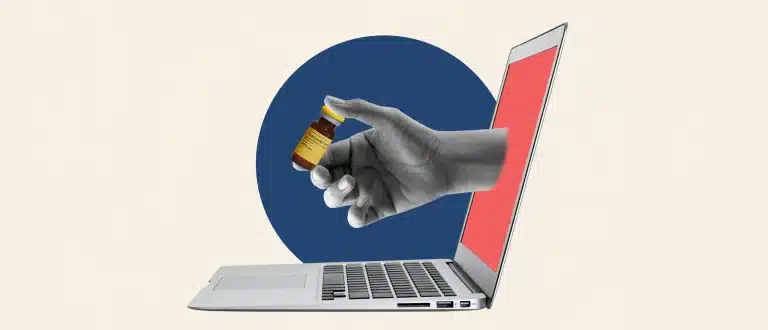10 Benefits of Testosterone Replacement Therapy (TRT)
Men generally don’t know or appreciate the benefits of testosterone until it starts fading away. And it does fade. Regardless of a well-balanced diet and solid exercise regimen, your body changes as you age, and your hormone levels and testosterone naturally decline approximately 1 percent every year starting around age 30 (1).
Maybe you’ve been suffering the symptoms of low testosterone (such as low energy levels, fatigue, excess body fat, erectile dysfunction, and low libido). Perhaps Hone’s at-home test has revealed that you have a testosterone deficiency, and now you’re considering testosterone replacement therapy (TRT) to get back on track.
Or maybe you aren’t quite sure whether testosterone treatment is right for you and you want to know more about what to expect from balancing your hormones, including outcomes and side effects.
Either way, we’ve got answers.
There’s a lot of health benefits of testosterone, and advancements in TRT have provided men with a way to reclaim control of their bodies and their lives.
TRT isn’t some sort of miracle, overnight cure. It’s vital that you understand going into the process that the journey to self-improvement is not a sprint, but a marathon. It’s also one that doesn’t really have a set finish line—and that’s all right.
As long as you follow the treatment prescribed by your doctor, you’ll stay ahead of the problem.
Let’s break down some of the biggest benefits of testosterone replacement therapy, share what you should expect to think and feel, and run through which effects of testosterone replacement therapy may take longer than others to notice.
1) You’ll Have More Energy
TRT doesn’t have an immediate effect; you may not even notice a change at first.
But usually, you’ll start feeling better psychologically within three to four weeks of starting treatment (2).
“Most people start to experience less fatigue after a month of treatment, in addition to sleeping better and feeling more rested overall,” says Jack Jeng, M.D., Chief Medical Officer of Hone Health.
One month in, you’ll find yourself feeling motivated to get off the couch and do more. And we all know how important physical activity is to your well-being and quality of life.
2) Your Mental Acuity and Focus Return
Testosterone plays a major role in cognitive performance, including memory, concentration, and reasoning. When your levels of testosterone are low, your mental function can suffer.
When you start TRT, the formidable cloud that has been hanging over your head will start to dissipate.
Your mental focus, cognition, and memory show signs of improvement after the first few weeks of treatment, while feelings of depression and sudden mood swings start subsiding within three to six weeks (2).
By 18 to 30 weeks in, your change in demeanor will support a radically improved self-confidence and clearer mindset, plus an inner strength that’s more ready to go toe-to-toe with whatever life throws your way.
3) You’ll Have Better Sexual Health & Higher Libido
Diminished sexual function (low sex drive, erectile dysfunction) is one of the most common reasons men seek treatment for low T (4).
For good reason: research shows that libido and testosterone levels are strongly correlated (5).
Thankfully, TRT can quickly improve your love life with your spouse or partner. Increased levels of testosterone in men often correlate with heightened sexual activity.
Several Hone customers have shared in our community forum that their sex drive started to come back within the first three to four weeks of treatment and that their erections were stronger and longer lasting, too.
Hone delivers treatments for low T to your doorstep, if prescribed.
The first step: Order an at-home hormone assessment, which comes with a free telehealth consultation.
4) Your Red Blood Cell Count Rebounds and Flourishes
Your body produces red blood cells through a process called erythropoiesis. Those cells made in your bone marrow contain hemoglobin, an essential protein that carries oxygen.
When you suffer from hypogonadism (low T), red blood cell production can slow to a crawl and even lead to anemia.
As your T level decreases, you’re left feeling progressively fatigued and weakened. Your blood pressure may also test higher than normal. The rest of your body has to work that much harder to get oxygen to your cells and keep your organs operating as they should.
TRT, fortunately, gets your red blood cell count back into the flow of things.
Results can vary based on your age and the dosage prescribed by your doctor, but the improved formation of your red blood cells will produce a noticeable effect after three months (3).
As that happens, those bouts of fatigue you’ve been fighting will lessen, and your blood pressure should stabilize closer to within normal range.
Your maximal output should peak between nine and 12 months. By then, your body is producing enough hemoglobin on its own to keep you energized, and the measurement of your red blood cells (known as hematocrit) reaches its maximum level. Some people on TRT may have higher hematocrit levels than normal (>51%) and need to donate blood regularly as a result. That’s why it’s important to work with an experienced healthcare provider when receiving treatment.
5) Your Blood Sugar Levels Normalize
When you’re hypogonadal, your sensitivity to insulin can be compromised, your blood sugar levels can spike, and you have an increased risk of developing type 2 diabetes (6).
TRT increases your insulin sensitivity, meaning it enables your body to effectively absorb glucose, or sugar, from your blood after a meal. Improvements in blood glucose levels and insulin sensitivity are usually seen after about three months, with the full effect happening after a year (2).
Also remember: one little spark is all you need to motivate you into becoming more physically active, which also increases your insulin sensitivity.
6) Energy is Properly Stored
Love to the lipids. These organic, water-insoluble compounds are your cellular membrane’s key building blocks. Lipids also serve as your personal energy storage warehouse and promote the signaling of electrical impulses throughout your brain.
When you suffer from testosterone deficiency, it can impact lipid metabolism and lead to higher cholesterol levels. This can cause serious health problems like heart disease, heart attacks, and stroke.
It takes about three months of treatment before your lipids correct themselves and get back to storing that energy you’ve been missing, and resharpen your biochemically dulled brain.
After 12 months, the effect on your lipids should reach their utmost, taking you one step closer to improved overall health (2).
7) Inflammation Decreases
Inflammation is your body’s ultimate defense mechanism. It helps your immune system combat physical injuries, infections, toxins, or anything else that causes cell damage.
If your testosterone tumbles, however, the physical impact it puts on your body causes more widespread inflammation, and for extended periods. Chronic inflammation has been linked to a smorgasbord of health conditions, including cancer, Alzheimer’s disease, heart disease, and type 2 diabetes. Simply put, your body’s friend is overstaying its welcome, and it’s hurting you.
TRT can help regulate chronic inflammation by restoring your testosterone levels to a healthy range, says Jeng.
It takes between three weeks to three months of treatment for blood tests to show improvements in biomarkers tied to chronic (2).
8) You’ll Build Lean Muscle Mass
Who doesn’t want a killer body? Diet, rest, and exercise are key to your success. However, when your testosterone levels dip below your normal range, your strength strains, your body mass gets mushy and your once-unbeatable endurance ends.
Testosterone helps with the heavy lifting to improve those areas.
Over the first three months, your body mass becomes leaner, your muscles grow meaner and you develop a stamina that won’t quit.
These effects are likely to start leveling off after six to 12 months of treatment. However, it’s not unusual for your body to continue experiencing marginal progress over the next several years (2).
Hone delivers treatments for low T to your doorstep, if prescribed.
The first step: Order an at-home hormone assessment, which comes with a free telehealth consultation.
9) Bone Loss Decelerates
If a snap-crackle-pop in your morning comes from your back and not your bowl of Rice Krispies, you may be feeling the effects of reduced bone mineral density (BMD).
The daily process in which your body adds new bone while breaking down old bone naturally slows down as you age. However, low testosterone levels can accelerate natural bone breakdown over bone formation which, left unchecked, can develop into osteopenia or, in more severe cases, osteoporosis, says Jeng.
Six months of testosterone replacement therapy treatment starts to decelerate bone breakdown, or resorption, giving new bone time to fortify (3).
The stiffness you’ve been feeling in your tendons and ligaments also lessens dramatically.
With continued treatment, the effects of improving your bone density can last three years or longer before they plateau (2).
10) You’ll Burn Belly Fat Faster
When your body’s testosterone thins out, it’s common for your waistband to expand.
“Low T is associated with increased fat mass, especially around your midsection, which can cause a vicious cycle as more fat cells can lead to lower testosterone levels,” says Jeng.
Hormone replacement therapy works twofold to address this.
After three months, you not only start burning off fat mass, you also begin increasing lean body mass (2). The belly flattens while muscle builds, giving your testosterone even more of a boost. Before long, you can end in that vicious cycle of low T-increasing-fat-increasing-low T.
If you’re following your prescribed treatment, studies show your body can continue seeing the dual effects for a few years. Plus, you can look down and see your toes again.
Testosterone Therapy Benefits: The Bottom Line
Testosterone replacement treatment is not an overnight solution. It’s especially important to follow the prescribed plan outlined by your doctor and to be patient. Prescribed dosages are likely to be adjusted along your journey, and that’s fine. You want to lock into a prescribed sweet spot so that your body can produce maximum results over long periods of time, and you regain the ability to enjoy what matters most: Being you.
Hone delivers treatments for low T to your doorstep, if prescribed.
The first step: Order an at-home hormone assessment, which comes with a free telehealth consultation.
References:
1. Anna G, et al (1991). Age, Disease, and Changing Sex Hormone Levels in Middle-Aged Men: Results of the Massachusetts Male Aging Study
2. Saad F, et al (2011). Onset of effects of testosterone treatment and time span until maximum effects are achieved.
3. Hua JT, et al (2016). Effects of Testosterone Therapy on Cognitive Function in Aging: A Systematic Review.
4. Straftis AA, Gray PB. (2019) Sex, Energy, Well-Being and Low Testosterone: An Exploratory Survey of U.S. Men’s Experiences on Prescription Testosterone.
5. Thomas G. Travison, et al (2006). The Relationship between Libido and Testosterone Levels in Aging Men
6. Yao QM, et al. (2018). Testosterone level and risk of type 2 diabetes in men: a systematic review and meta-analysis.















